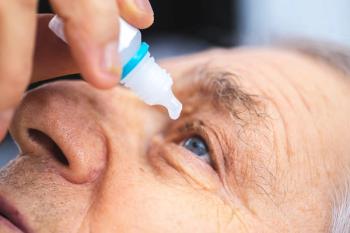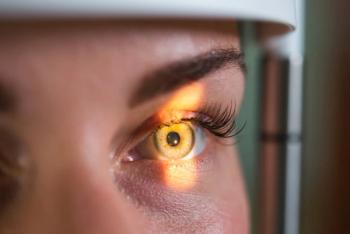
How artificial intelligence is impacting optometry
Vittorio Mena, OD, MS, discusses the impact of a lecture given at Vision Expo West on AI.
While at Vision Expo West in Las Vegas, Nevada, I was able to attend a 2½-hour lecture called “The Artificial Intelligence Revolution: Practical Applications in Eye Care Today.” It was hosted by optometrists Scot Morris, OD, FAAO; Masoud Nafey, OD, MBA, FAAO; Dena Weitzman, OD, FAAO; and Howard Purcell, OD, FAAO, and special guests Rehan Ahmed, MD, an ophthalmologist from Texas; Sunny Virmani, senior product manager at Google leading the Health AI division; and Easy Anyama, chief information officer at FluoreSCENE Media, founder of ODX Health, and general up-and-comer in AI and eye care.
Bill Gates was a visionary and made waves when he stated that every household would have a desktop computer in their homes. Now that this has come true, along with cellular devices, what’s next? Well, the future is leading us to artificial intelligence (AI). It was said that in 3 years about 25% of the population will have a virtual reality headset in their home. Imagine what things in 5 to 10 years will look like. AI will affect all parts of our lives, including in the entertainment and financial worlds, as well as in the health care space.
There were 2 key takeaways from the talk. The first was understanding how AI technology can be integrated into your practice on both the giving and receiving ends and how it can make our jobs easier, such as scribing medical charts into your electronic health record or generating explanations on certain disease states. The second was that AI will not replace human beings; however, those doctors who do incorporate AI into their practice will likely beat out the ones who do not incorporate it.
The focus of the talk was how we can overcome the 5 great health care challenges: cost, connection, convenience, quality, and access to care. I will share a little from each speaker during the event. Nafey, who is the founder of MENT AI, discussed 3 different types of AI: artificial narrow intelligence, artificial general intelligence, and artificial superintelligence. The most common one we see out in the marketplace is general intelligence, which can perform similar to if not better than human intelligence. One example is ChatGPT, which can summarize concepts and predict new content. Superintelligence, on the other hand, is way more advanced than any human on the planet. Weitzman touched on how in order to get data output there needs to be high-quality input. AI can function or learn only based on the stuff you teach it. A good data set contains accuracy, relevance, completeness, validity, and timeliness.
Ahmed discussed 3 problems in the health care space. The first is too many patients and not enough doctors, the second is rising costs and shrinking payments, and the third is the explosion of data work. He showed us how there are AI robots performing cataract surgery under the supervision of an ophthalmologist and explained they can even handle imaging technologies such as at-home optical coherence tomography devices. He mentioned that diabetic eye disease treatment was the first FDA-approved use of autonomous AI in all of health care.
Anyama stated that AI is your key to success, as it can help manage your inventory and workflow and even help implement business strategies. Purcell, who is the president and CEO of the New England College of Optometry, focused on how AI technology can lead to better education with AI bots/avatars that have tailored learning experiences to help students fill in any gaps that they may have. We got to witness his very own avatar and chat with “Dr Purcell” as “he” gave us responses that were preprogrammed. To finish off the lecture was Virmani, the group product manager at Google Health AI, who discussed diagnostic and screening tools that can enable easier disease detection through retinal images and how this type of technology can be accessible and affordable for everyone.
In the end we will continue to learn and adapt as technology continues to improve. This all reminds me of when I graduated high school in 2004 when the movie I, Robot, starring Will Smith, came out. That was 20 years ago, and they predicted such a thing back then; imagine what the next 20 years will look like. Will it be like The Terminator or The Jetsons? We can only sit back and watch what happens.
Newsletter
Want more insights like this? Subscribe to Optometry Times and get clinical pearls and practice tips delivered straight to your inbox.









































